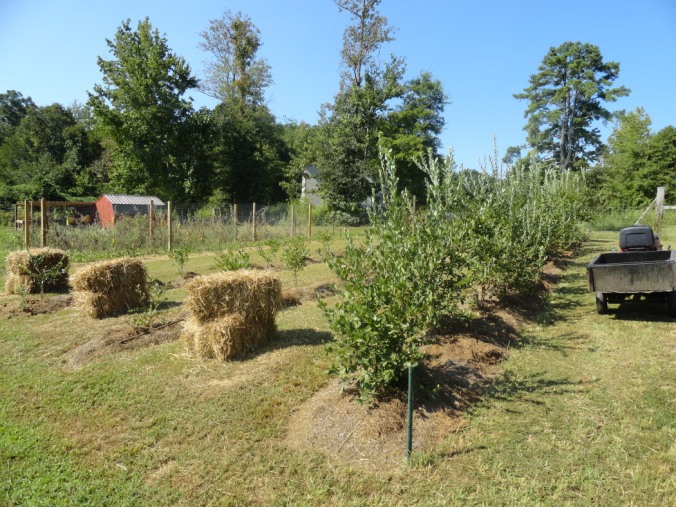Here is another article we enjoyed reading. Mainly because we love blueberries – who doesn’t? This reminded us of picking blueberries in Michigan many years ago.
Filling those buckets seemed to take hours. Here is an interesting way to get rid of a pest problem:

We have thirty-three blueberry bushes. This year eleven of them were harvested from, next year we will pick berries from twenty-seven bushes, and then in 2018 all thirty-three bushes will be mature enough to harvest from.
The eleven bushes that we picked from this year were planted in January of 2013 and I believe we harvested around 20 gallons of big, juicy berries.
It was some time during the early summer that we began noticing a few of our berries were drying on the bush, just shriveling up. We researched this and determined that we were seeing signs of Cranberry Fruitworms. After much research, we learned this fruitworm is the larva of a tiny moth that lays eggs in the berry blooms.
The larva hatch about the same time the berries begin to ripen. The larva bores into a berry, eats to its fill, then drops to the grown where it hangs out all winter under the mulch and debris. When spring comes again, the larva hatch into more egg laying little moths. It appears that if no control is taken over these fruitworm, they could eventually destroy an entire crop of berries in only one season.
Here is the method we’ve chosen to take to run these little boogers off. Since the larva hang out in debris under the bushes, the first thing that made sense to us was to remove the debris. Each spring since the bushes have been planted we’ve piled on more and more pine straw mulch, never removing the existing mulch, just piling on more.
Well, last week we removed all of the old mulch. Then we took up the water lines, weeded the beds really good, and just in case any fruitworms had buried themselves in the soil, we raked it lightly and sprinkled on crushed red pepper, and we also added a handful of cottonseed meal around the base of each plant to add a little nitrogen. Lastly, each bed received a fresh coat of wheat straw mulch.
Full article (and it is a good read) is on this wordpress powered blog: https://rockycropfarm.com/2016/09/18/rejuvenating-blueberry-plants/
image from same article and blog. Image credit to: https://rockycropfarm.com